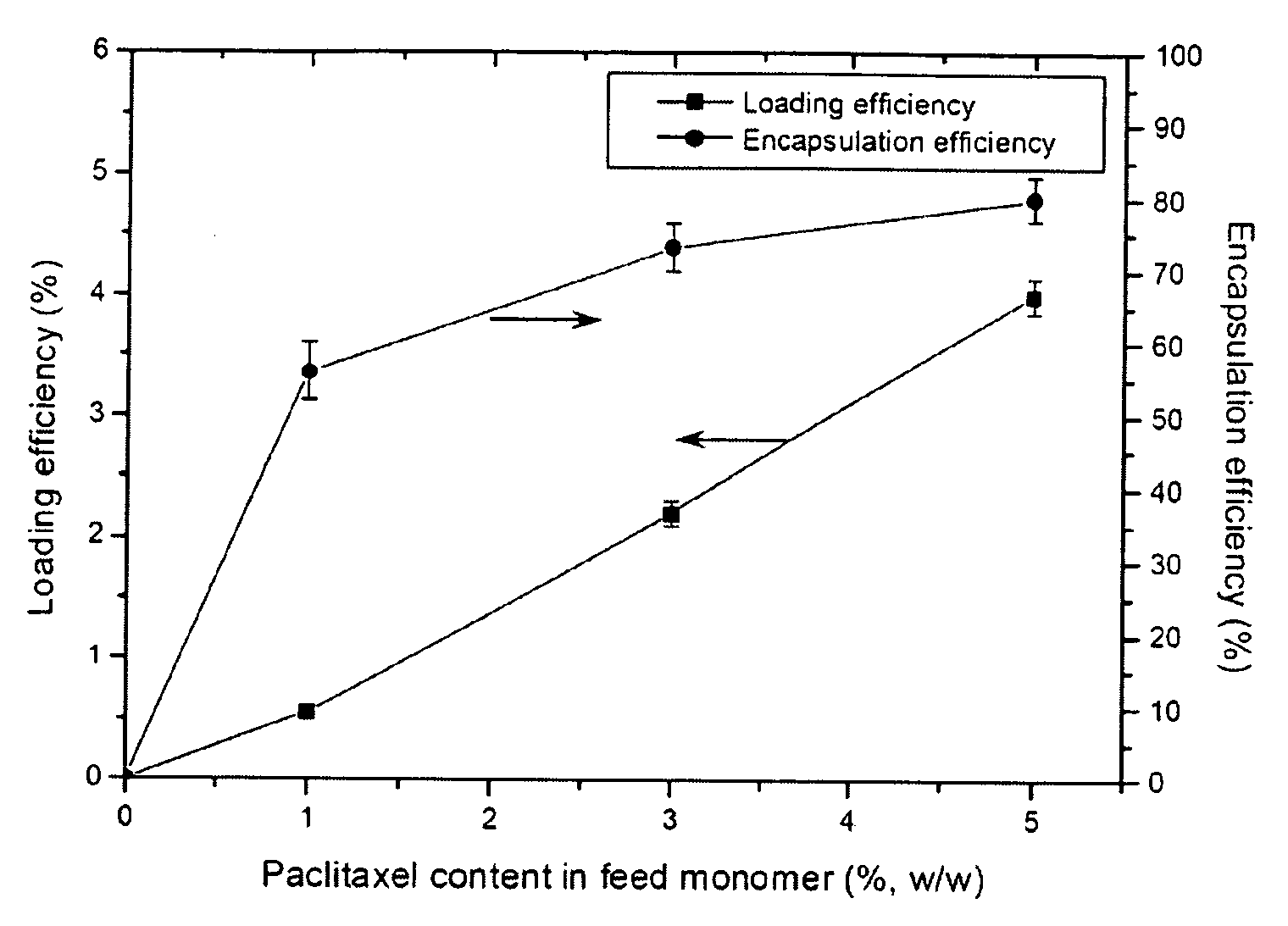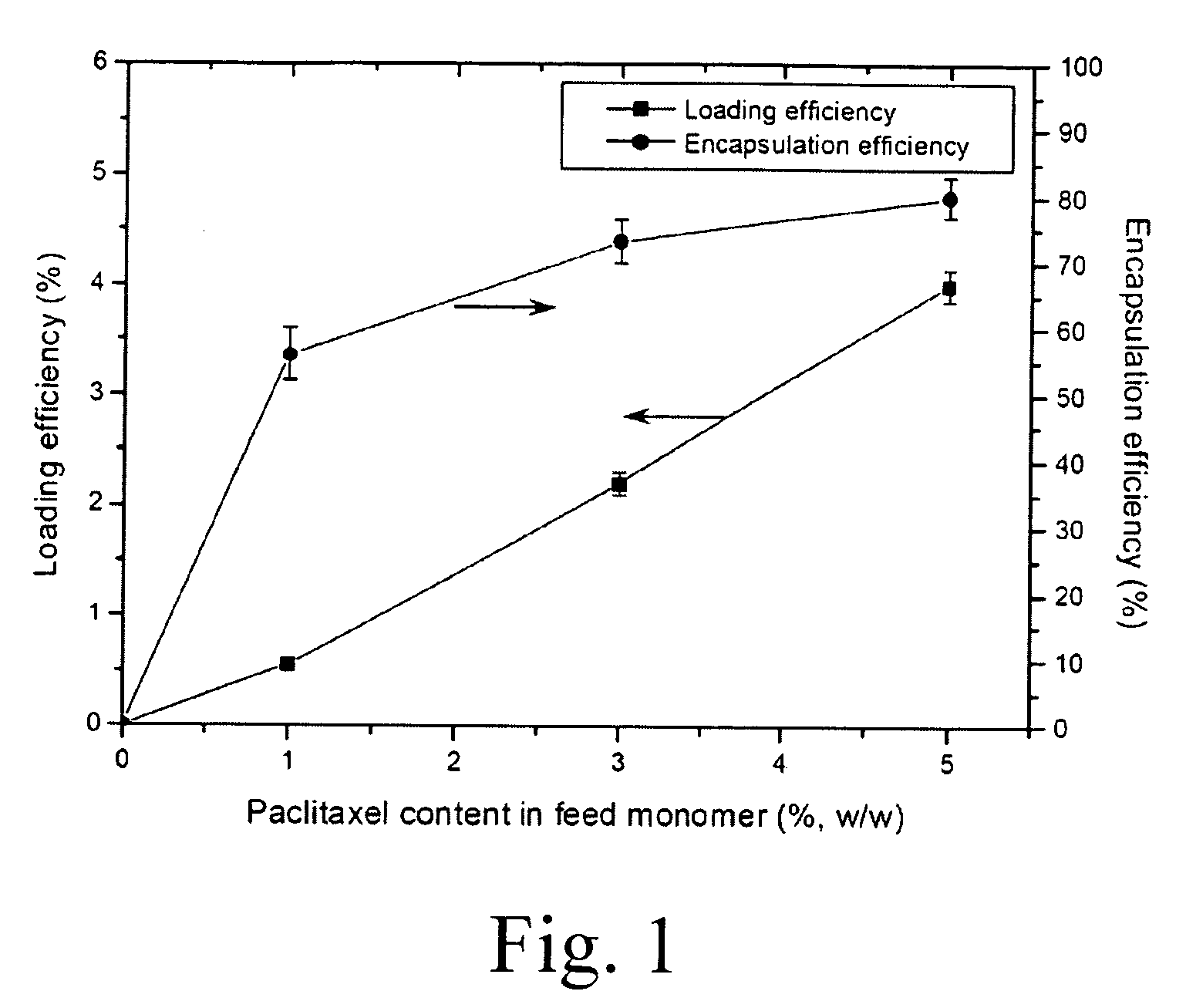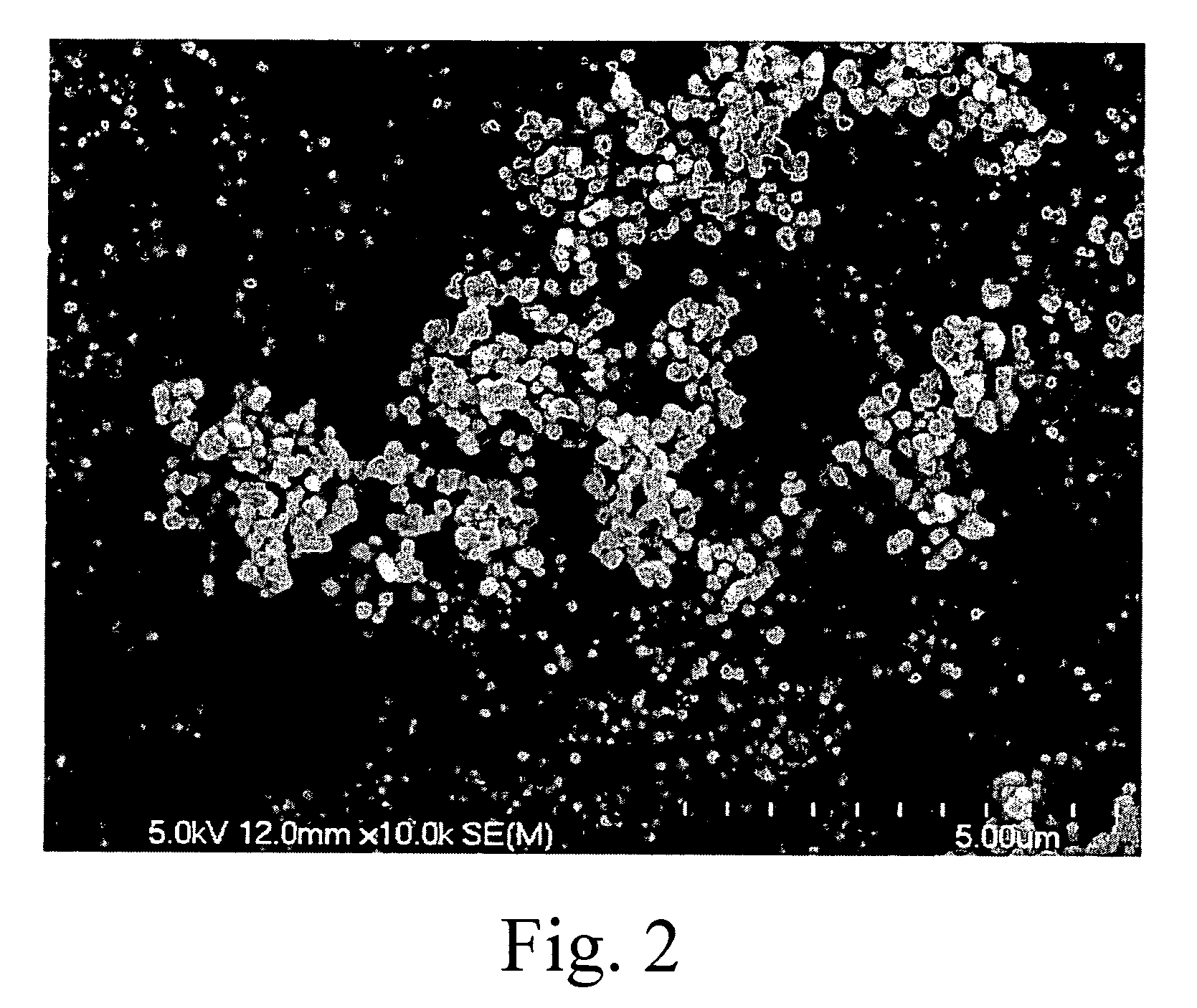Drug-loaded poly (alkyl-cyanoacrylate) nanoparticles and process foe the preparation thereof
a technology of alkyl cyanoacrylate and nanoparticles, which is applied in the direction of drug compositions, peptide/protein ingredients, antibacterial agents, etc., can solve the problems of patients not only suffering seriously but also receiving insufficient therapeutic drugs, and the degradation of therapeutic agents, especially anti-cancer drugs, can not only be slow, and achieve high increase the loading and encapsulation efficiency of paca nanoparticles, and high shear fields
- Summary
- Abstract
- Description
- Claims
- Application Information
AI Technical Summary
Benefits of technology
Problems solved by technology
Method used
Image
Examples
Embodiment Construction
[0014]The present invention provides a process for preparing high loading and encapsulation poly(alkyl cyanoacrylate) nanoparticles for biological and therapeutic agents. More particularly, the nanoparticles formed by this process are feasible to load highly hydrophobic drugs.
[0015]The following instance of the process for the synthesis of drug-loaded cyanoacrylate nanoparticles is illustrative, but not limiting the scope of the present invention. Reasonable variations, such as those occur to reasonable artisan, can be made herein without departing from the scope of the present invention.
[0016]The paclitaxel-loaded PBCA nanoparticles were prepared by miniemulsion and emulsion polymerization processes, respectively. Since BCA is an extremely active monomer, even the presence of a weak basic substance is capable of initiating the anionic polymerization. For obtaining a stable a stable solution of monomer containing paclitaxel, it is required for BCA having high purity and containing l...
PUM
| Property | Measurement | Unit |
|---|---|---|
| temperature | aaaaa | aaaaa |
| wavelength | aaaaa | aaaaa |
| flow rate | aaaaa | aaaaa |
Abstract
Description
Claims
Application Information
 Login to View More
Login to View More - R&D
- Intellectual Property
- Life Sciences
- Materials
- Tech Scout
- Unparalleled Data Quality
- Higher Quality Content
- 60% Fewer Hallucinations
Browse by: Latest US Patents, China's latest patents, Technical Efficacy Thesaurus, Application Domain, Technology Topic, Popular Technical Reports.
© 2025 PatSnap. All rights reserved.Legal|Privacy policy|Modern Slavery Act Transparency Statement|Sitemap|About US| Contact US: help@patsnap.com



